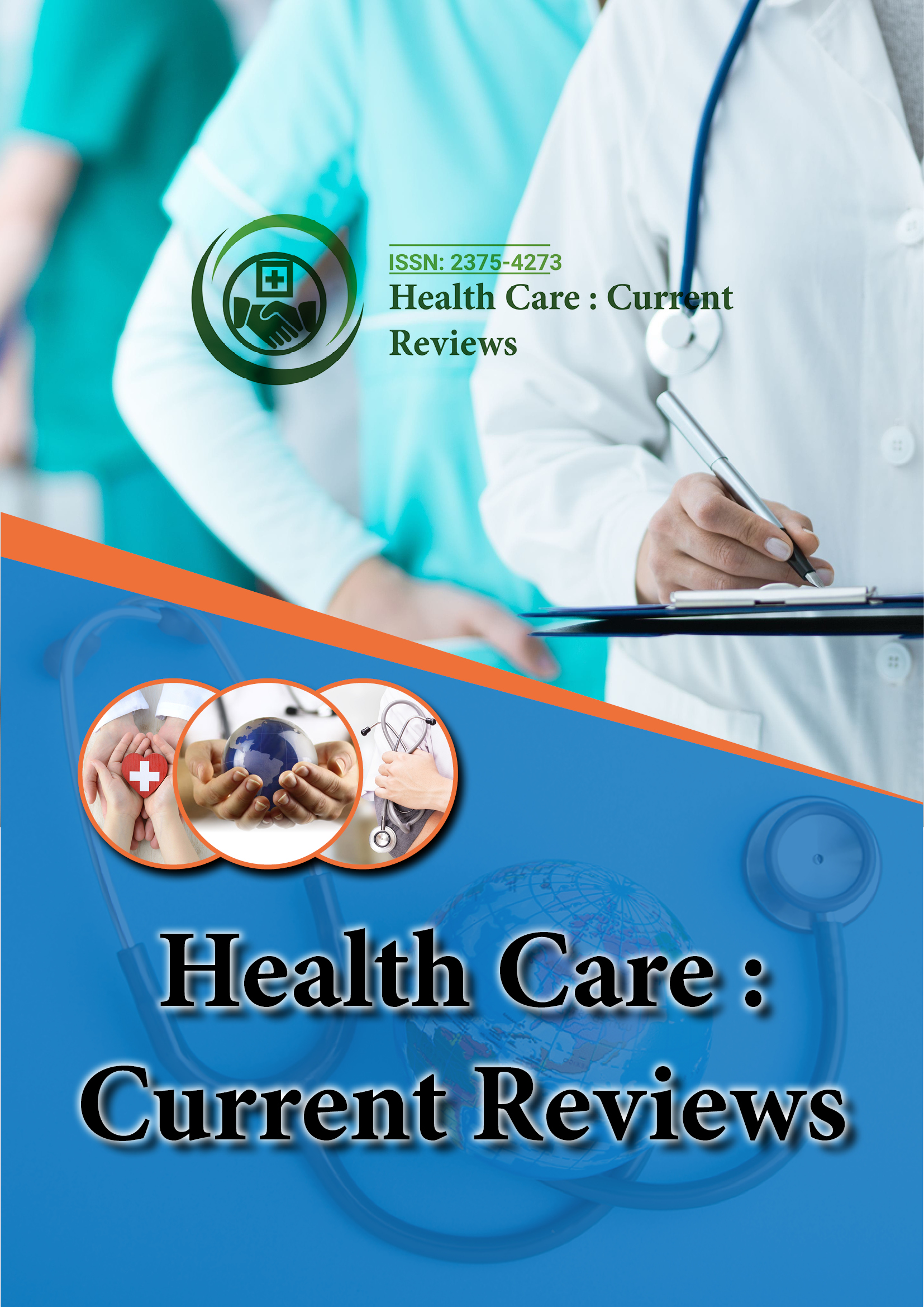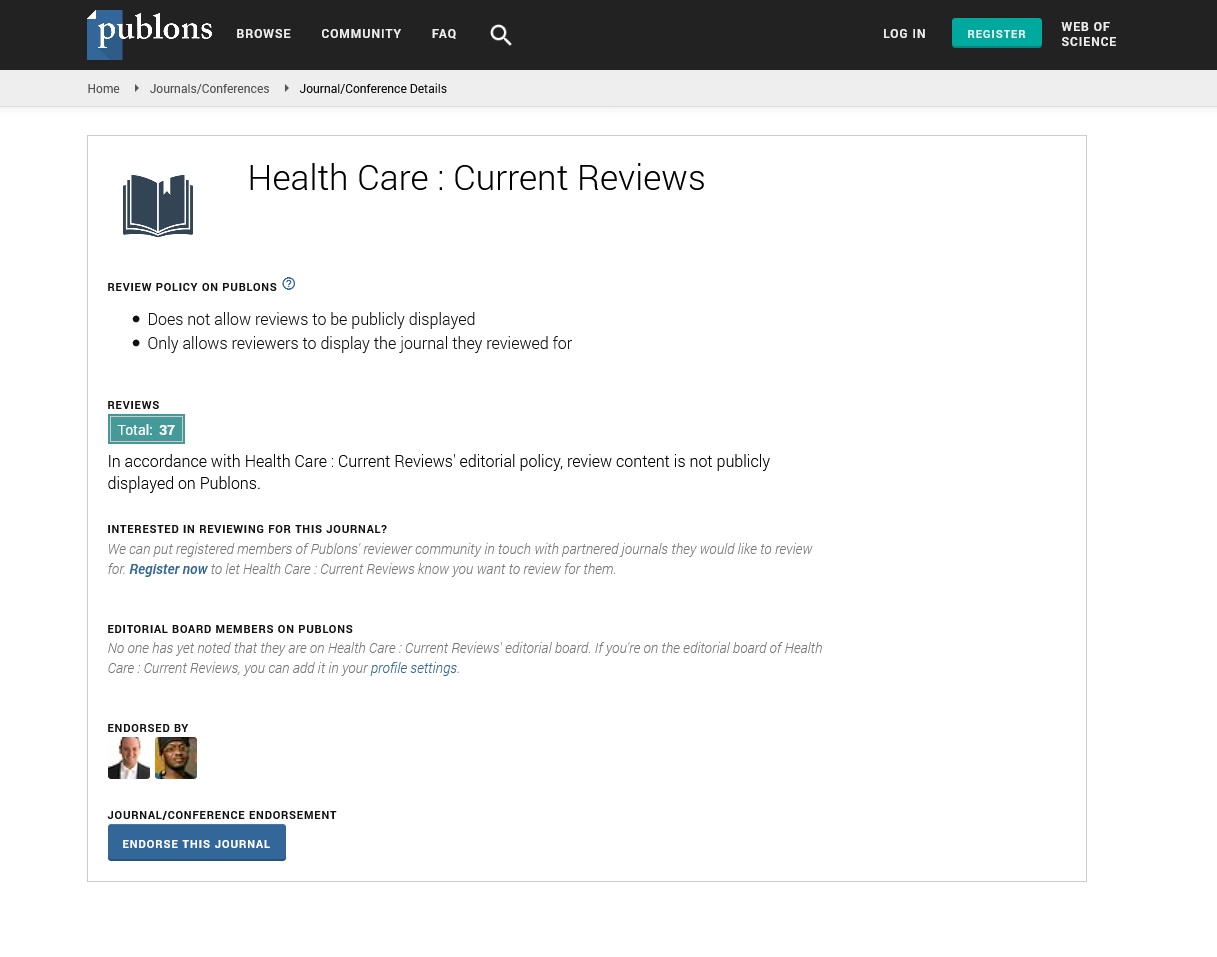Indexed In
- Open J Gate
- Academic Keys
- RefSeek
- Hamdard University
- EBSCO A-Z
- Publons
- Geneva Foundation for Medical Education and Research
- Google Scholar
Useful Links
Share This Page
Journal Flyer

Open Access Journals
- Agri and Aquaculture
- Biochemistry
- Bioinformatics & Systems Biology
- Business & Management
- Chemistry
- Clinical Sciences
- Engineering
- Food & Nutrition
- General Science
- Genetics & Molecular Biology
- Immunology & Microbiology
- Medical Sciences
- Neuroscience & Psychology
- Nursing & Health Care
- Pharmaceutical Sciences
Commentary - (2025) Volume 13, Issue 1
Improving Healthcare Access with Mobile Health Solutions
Ayako Tanaka*Received: 26-Feb-2025, Manuscript No. HCCR-25-28738; Editor assigned: 28-Feb-2025, Pre QC No. HCCR-25-28738 (PQ); Reviewed: 14-Mar-2025, QC No. HCCR-25-28738; Revised: 21-Mar-2025, Manuscript No. HCCR-25-28738 (R); Published: 28-Mar-2025, DOI: 10.35248/2375-4273.25.13.430
Description
Mobile health solutions have transformed the way healthcare is delivered, especially in regions where traditional medical services are limited. These tools, which include mobile apps, text messaging platforms and wearable technologies, bring services closer to individuals who may otherwise struggle to reach hospitals or clinics. As mobile phone usage continues to rise across different age groups and income levels, there is a growing opportunity to use this technology to address gaps in care.
One of the most significant advantages of mobile health tools is their ability to extend support to people living in remote or underserved areas. In places where the nearest medical facility may be hours away, a simple phone can provide essential services such as appointment scheduling, medication reminders and consultations. This not only reduces the burden of travel but also encourages individuals to seek help when they need it, rather than waiting until symptoms become severe.
Mobile tools also help in managing ongoing health conditions. For people with chronic illnesses like diabetes or hypertension, regular check-ins and monitoring are important. Through mobile platforms, patients can receive reminders to take their medication, log their readings and report changes in their condition. These features make it easier for individuals to stay on track with treatment plans, which can reduce the likelihood of complications.
In emergency situations, access to information through a mobile device can save lives. Mobile solutions can deliver instructions for first aid, connect people to emergency services, or offer immediate advice based on symptoms. This real-time communication improves the chances of early intervention and may lead to better outcomes.
Health education is another area where mobile tools are making a difference. Mobile platforms can deliver simple, clear messages about nutrition, hygiene, maternal care and vaccination schedules. This kind of outreach supports healthier lifestyles and can prevent illness before it starts. When health education is available through text or audio messages in local languages, it becomes more accessible and easier to understand.
These tools also help healthcare providers by improving how they collect and manage patient data. With digital records, providers can track a patient’s history more accurately and share information with other medical professionals when needed. This leads to better coordination and can reduce errors that may arise from missing or incomplete records.
Affordability plays a major role in the spread of mobile health tools. Since many solutions are designed to work on basic phones and do not require expensive hardware or data plans, they can reach a wider audience. This accessibility ensures that more people benefit, not just those with high-end devices or internet access.
There are also benefits for public health monitoring. Mobile systems can be used to collect data on symptoms or infections in real time, allowing public health officials to detect patterns and act quickly. This can help in managing outbreaks or planning services more effectively based on the needs of specific areas.
As healthcare systems look for ways to improve access and reduce strain on facilities, mobile health tools offer a practical path forward. While not a replacement for traditional medical care, they add an important layer of support that connects individuals to help when and where they need it. Whether through managing daily health habits or reaching out during a crisis, mobile technology has become an important part of the healthcare landscape. With continued innovation and collaboration among governments, healthcare workers and technology providers, these tools can continue to improve lives and make health services more reachable for all.
Citation: Tanaka A (2025). Improving Healthcare Access with Mobile Health Solutions. Health Care Curr Rev. 13:430.
Copyright: © 2025 Tanaka A. This is an open access article distributed under the terms of the Creative Commons Attribution License, which permits unrestricted use, distribution and reproduction in any medium, provided the original author and source are credited.

